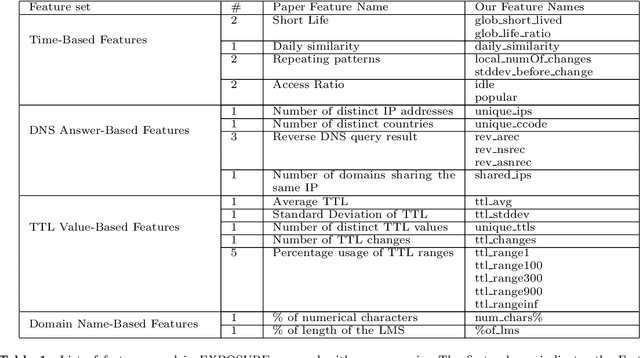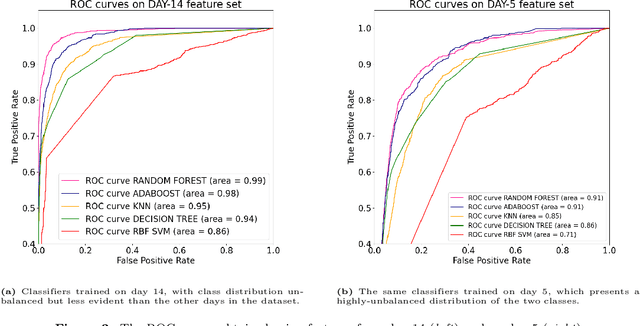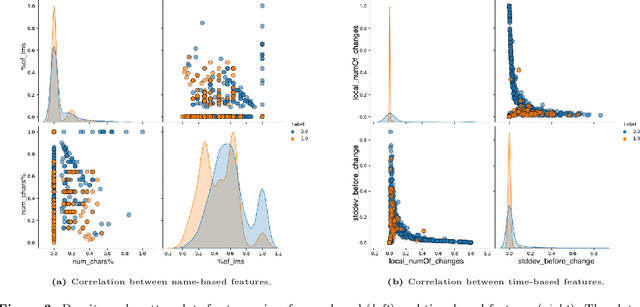Giorgio Piras
On the Robustness of Adversarial Training Against Uncertainty Attacks
Oct 29, 2024



Abstract:In learning problems, the noise inherent to the task at hand hinders the possibility to infer without a certain degree of uncertainty. Quantifying this uncertainty, regardless of its wide use, assumes high relevance for security-sensitive applications. Within these scenarios, it becomes fundamental to guarantee good (i.e., trustworthy) uncertainty measures, which downstream modules can securely employ to drive the final decision-making process. However, an attacker may be interested in forcing the system to produce either (i) highly uncertain outputs jeopardizing the system's availability or (ii) low uncertainty estimates, making the system accept uncertain samples that would instead require a careful inspection (e.g., human intervention). Therefore, it becomes fundamental to understand how to obtain robust uncertainty estimates against these kinds of attacks. In this work, we reveal both empirically and theoretically that defending against adversarial examples, i.e., carefully perturbed samples that cause misclassification, additionally guarantees a more secure, trustworthy uncertainty estimate under common attack scenarios without the need for an ad-hoc defense strategy. To support our claims, we evaluate multiple adversarial-robust models from the publicly available benchmark RobustBench on the CIFAR-10 and ImageNet datasets.
Adversarial Pruning: A Survey and Benchmark of Pruning Methods for Adversarial Robustness
Sep 02, 2024Abstract:Recent work has proposed neural network pruning techniques to reduce the size of a network while preserving robustness against adversarial examples, i.e., well-crafted inputs inducing a misclassification. These methods, which we refer to as adversarial pruning methods, involve complex and articulated designs, making it difficult to analyze the differences and establish a fair and accurate comparison. In this work, we overcome these issues by surveying current adversarial pruning methods and proposing a novel taxonomy to categorize them based on two main dimensions: the pipeline, defining when to prune; and the specifics, defining how to prune. We then highlight the limitations of current empirical analyses and propose a novel, fair evaluation benchmark to address them. We finally conduct an empirical re-evaluation of current adversarial pruning methods and discuss the results, highlighting the shared traits of top-performing adversarial pruning methods, as well as common issues. We welcome contributions in our publicly-available benchmark at https://github.com/pralab/AdversarialPruningBenchmark
HO-FMN: Hyperparameter Optimization for Fast Minimum-Norm Attacks
Jul 11, 2024



Abstract:Gradient-based attacks are a primary tool to evaluate robustness of machine-learning models. However, many attacks tend to provide overly-optimistic evaluations as they use fixed loss functions, optimizers, step-size schedulers, and default hyperparameters. In this work, we tackle these limitations by proposing a parametric variation of the well-known fast minimum-norm attack algorithm, whose loss, optimizer, step-size scheduler, and hyperparameters can be dynamically adjusted. We re-evaluate 12 robust models, showing that our attack finds smaller adversarial perturbations without requiring any additional tuning. This also enables reporting adversarial robustness as a function of the perturbation budget, providing a more complete evaluation than that offered by fixed-budget attacks, while remaining efficient. We release our open-source code at https://github.com/pralab/HO-FMN.
Samples on Thin Ice: Re-Evaluating Adversarial Pruning of Neural Networks
Oct 12, 2023Abstract:Neural network pruning has shown to be an effective technique for reducing the network size, trading desirable properties like generalization and robustness to adversarial attacks for higher sparsity. Recent work has claimed that adversarial pruning methods can produce sparse networks while also preserving robustness to adversarial examples. In this work, we first re-evaluate three state-of-the-art adversarial pruning methods, showing that their robustness was indeed overestimated. We then compare pruned and dense versions of the same models, discovering that samples on thin ice, i.e., closer to the unpruned model's decision boundary, are typically misclassified after pruning. We conclude by discussing how this intuition may lead to designing more effective adversarial pruning methods in future work.
Improving Fast Minimum-Norm Attacks with Hyperparameter Optimization
Oct 12, 2023

Abstract:Evaluating the adversarial robustness of machine learning models using gradient-based attacks is challenging. In this work, we show that hyperparameter optimization can improve fast minimum-norm attacks by automating the selection of the loss function, the optimizer and the step-size scheduler, along with the corresponding hyperparameters. Our extensive evaluation involving several robust models demonstrates the improved efficacy of fast minimum-norm attacks when hyper-up with hyperparameter optimization. We release our open-source code at https://github.com/pralab/HO-FMN.
Adversarial Attacks Against Uncertainty Quantification
Sep 19, 2023Abstract:Machine-learning models can be fooled by adversarial examples, i.e., carefully-crafted input perturbations that force models to output wrong predictions. While uncertainty quantification has been recently proposed to detect adversarial inputs, under the assumption that such attacks exhibit a higher prediction uncertainty than pristine data, it has been shown that adaptive attacks specifically aimed at reducing also the uncertainty estimate can easily bypass this defense mechanism. In this work, we focus on a different adversarial scenario in which the attacker is still interested in manipulating the uncertainty estimate, but regardless of the correctness of the prediction; in particular, the goal is to undermine the use of machine-learning models when their outputs are consumed by a downstream module or by a human operator. Following such direction, we: \textit{(i)} design a threat model for attacks targeting uncertainty quantification; \textit{(ii)} devise different attack strategies on conceptually different UQ techniques spanning for both classification and semantic segmentation problems; \textit{(iii)} conduct a first complete and extensive analysis to compare the differences between some of the most employed UQ approaches under attack. Our extensive experimental analysis shows that our attacks are more effective in manipulating uncertainty quantification measures than attacks aimed to also induce misclassifications.
Explaining Machine Learning DGA Detectors from DNS Traffic Data
Aug 10, 2022



Abstract:One of the most common causes of lack of continuity of online systems stems from a widely popular Cyber Attack known as Distributed Denial of Service (DDoS), in which a network of infected devices (botnet) gets exploited to flood the computational capacity of services through the commands of an attacker. This attack is made by leveraging the Domain Name System (DNS) technology through Domain Generation Algorithms (DGAs), a stealthy connection strategy that yet leaves suspicious data patterns. To detect such threats, advances in their analysis have been made. For the majority, they found Machine Learning (ML) as a solution, which can be highly effective in analyzing and classifying massive amounts of data. Although strongly performing, ML models have a certain degree of obscurity in their decision-making process. To cope with this problem, a branch of ML known as Explainable ML tries to break down the black-box nature of classifiers and make them interpretable and human-readable. This work addresses the problem of Explainable ML in the context of botnet and DGA detection, which at the best of our knowledge, is the first to concretely break down the decisions of ML classifiers when devised for botnet/DGA detection, therefore providing global and local explanations.
 Add to Chrome
Add to Chrome Add to Firefox
Add to Firefox Add to Edge
Add to Edge